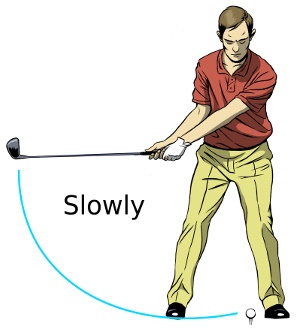
The snap or duck hook even harder left – usually into oblivion. If the golfer can find his ball, it's often a long way from the green and surrounded by trouble.
Hooks are typically caused by a swing that's too quick and/or flat. The quick swinger takes the club back abruptly, then casts the club violently downward with the hands. The golfer whose swing is too flat has a plane that is more horizontal than ideal, causing a dramatic inside-to-out clubhead path.In other words, snap-hooking is a problem you must fix ASAP.
If you fall into the category of quick swingers, the following drill will get your hips – not your hands – leading the downswing: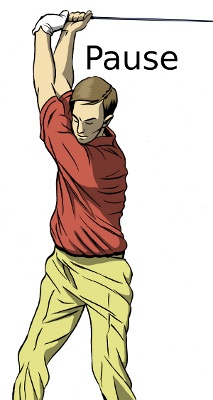
- Using a club you tend to hook, set up to the ball in your normal manner and take the club back slowly.
- When you reach the top of the backswing, pause for 1-2 seconds.
- Complete the swing.
To check your swing plane, take your stance with a full-length mirror or reflective window to your right. Make your normal backswing and stop at the top, then look at the mirror.
If your right arm is below the level of your right shoulder, your plane is probably too flat. Standing closer to the ball at address will promote a more upright swing.
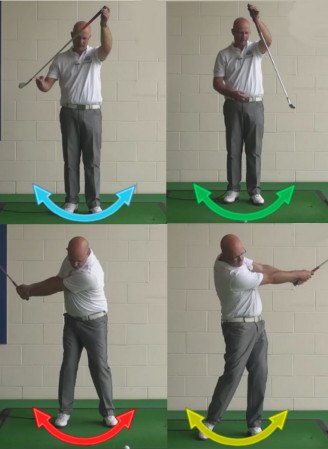
Fix Your Hook by Slowing Your Hands
There are very few mistakes in golf as frustrating as the hook. When you are hitting a hook, it is almost impossible to get your ball around the course without incurring a number of penalty shots – and likely lost balls as well. In fact, if you fight a hook for long enough, you might start wondering if you want to continue playing the game at all. The game simply isn't much fun when you look up time after time to see the ball diving quickly to the left.
Fortunately, there is hope. You don't have to feel like you are destined to hit a hook forever, as a few mechanical adjustments might be all that stands between you and better ball striking. The good news is this – players who hit a hook are generally closer to making a good swing than those who are hitting a slice. If it is a hook that you are fighting, you are already doing at least a few things well within your swing. Once you get the final piece or two of the puzzle into place you should be able to start enjoying some of the best golf of your life. Don't give up on the game just because you are fighting a hook – you aren't far away from having a great time on the course.
Overactive hands through the hitting area is one of the mistakes that can lead to a hook. As the club swings through impact, your hands are going to be rolling over to the left in order to square up the face at just the right moment. While some degree of this 'release' is required to hit good shots, too much release will put your club face in a closed position – and you will hit a hook as a result. When this happens, you need to find ways to slow down your hands at the bottom of the swing. Even just a minor tweak to your swing technique could effectively slow down your hands and allow you to hit beautiful shots once again.
If you would like to work on fixing your hook by slowing down your hands, the content below should be of great help. It is important to note that you don't want to make any other changes at this time – trying to change more than one thing at once is going to lead to confusion. Keep the rest of your swing the same for now while working on slowing down the release of your hands. If, after you are finished with this project, the hook still gives you trouble, you can then work on other changes to finish straightening out your ball flight pattern. However, there is a good chance that slowing down your hands is the only adjustment you will need to make, so dedicate yourself to this process and look forward to good results.
All of the content below is based on a right handed golfer. If you happen to play left handed, please be sure to reverse the directions as necessary.

Checking On Your Grip
There is a chance that your entire hook problem boils down to a bad grip. While it would be frustrating to learn that the whole issue is just an error in the way you are holding the club, it would also be a great discovering because changing your grip is a relatively quick fix. When it comes to a hook, the culprit is often a grip that is too strong, causing the club to quickly flip over through impact. Those who play with a strong grip often live on the edge of hitting a hook, needing to be careful about the way they move through the ball in order to keep the club face in the right position.
Before discussing how to fix your strong grip, do you know what that term means? Some inexperienced golfers assume that a 'strong' grip refers to having a tight grip on the handle of the club, but that isn't the case at all. This term has nothing to do with the tightness of your grip. Rather, it is all about the positioning of your hands. A strong grip is one that has the hands (specifically, the left hand) turned well to the right on the grip.
The best way to judge the strength of your grip is to look down at address and count how many knuckles you can see on the back of your left hand. If you can see at least three knuckles, you have a rather strong grip. If you can see two or less, your grip would be considered weak. There is nothing wrong with playing with a strong grip where you can see three knuckles or more, but understand that this style could contribute to your hook. Even if you decide that you want to keep your strong grip going forward, you may need to consider modifying it somewhat in order to slow down your hands through the hitting area.
To test out how a weaker grip could help your ball flight, head to the driving range and take your driver from the bag. Since the driver is the longest club in the bag, it is the club that you want to use for these kinds of tests because it will expose any flaws in your swing as quickly as possible. You want the brutal truth in this case – even if it isn't pretty. Set up to your first shot with the driver and weaken your grip prior to starting the swing. Turn your left hand just slightly to the left, so that you can see about ½ knuckle less than you could in your normal grip. Hit a few shots with this new grip and observe the results. If you are still turning the ball too hard to the left, weaken the grip a little further and try again.
While you will need to spend some practice time working with your new grip before you become comfortable, the early results should give you a pretty clear picture of how effective this grip change is going to be. If your hook seems unaffected by the new grip, you can safely assume that you have other problems to deal with. However, if the hook shows signs of slowing down, keep working on the new grip and see if it is able to eliminate your hook tendency after a few more practice sessions.
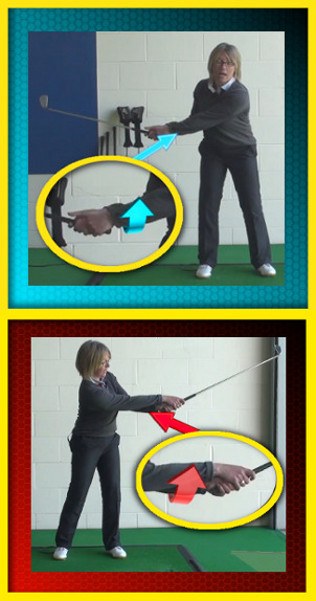
Relax the Right Hand
Another potential cause of fast hands through impact is a right hand that is doing too much work in the downswing. It might be a little bit counterintuitive, but the right hand is actually the one that should mostly stay out of the way for a right handed golfer. It is the left hand that is going to do most of the work in your swing, while the right hand is largely along for the right. At some point, of course, the right hand is going to kick in and help you release the club through the ball, but allowing it to get involved too early is a recipe for disaster.
Many amateur golfers make the mistake of starting their downswing with the right hand applying too much pressure to the club. If you manage to do this along with bringing the club well from the inside, you will be on track for a hook. Do your best to keep your right hand relaxed and passive throughout most of the downswing. A good way to think about the downswing action is to picture the butt end of the club moving toward the ball for as long as possible. By pulling the end of the club down toward the ball with the back of your left hand, you can keep your right hand neutralized and basically out of the way.
A good way to work toward this goal is to pay attention to the grip pressure that you are applying with your right hand. It is important that you keep your right hand relaxed on the grip, only applying enough pressure to maintain control throughout the swing. If you squeeze the grip with your right hand, you will be giving that hand too much power, and it will likely cause problems on a regular basis. Spend some time on the range working on a relaxed right hand grip and it should translate to a reduced tendency to hit a hook.
Still think you need to hold on tight with the right hand in order to hit good shots? Try taking your right hand off the club altogether while hitting a few practice shots in the short game area. During your next short game practice session, hit a few chips and pitches with only your left hand. This is a great way to feel how the club can move through the ball without having any kind of impetus from the right hand at all. Of course, you would never have enough power with this method to hit full shots using just one hand, but it is a great deal to emphasize how important the left hand is in the swing. Learn how to chip and pitch solidly with just one hand and your game will be better for it when you put that right hand back in place.
To work on eliminating your hook by relaxing your right hand during the swing, you will want to basically repeat the process from the previous section. Head to the driving range, take your driver from the bag, and hit some shots. Focus on the role that your right hand is playing during the swing, and make sure that it doesn't try to do too much. If this adjustment is going to be successful, it should start to pay off almost immediately. However, if you don't notice any improvement in your hook pattern, there is a good chance that you are going to keep looking for another solution.
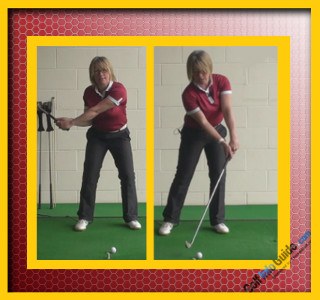
Speed Up Your Body
It is entirely possible that you don't actually need to slow down your hands – instead, you may simply need to speed up the rest of your body. Everything in the golf swing is relative, meaning the way you move your body is connected to the way your move your hands, and vice versa. If you are having trouble with the club face closing too quickly before your body can get through the shot, the solution may be to get your body through the ball faster.
The important thing here is that you are able to get your hips rotated through the shot and past the ball before you make contact. If you can do that quickly, even while allowing your hands to release as fast as they would like, you should be able to avoid a hook. In fact, this is how many professional golfers play the game. The pros tend to have fast hands through the ball, but they have even faster lower bodies, meaning they can get cleared before impact. Most amateurs, the other hand, move slowly through the downswing with their lower bodies, and they then need to force their hands to slow down in order to prevent the dreaded hook.
A good way to judge how your lower body is performing in the downswing is to check on your finish position. When you are finished with your swing, your lower body should be balanced and facing the target. Take a look at your belt buckle – has it come all the way around to where it is pointing at the target you picked out for the shot? If not, you are not using your lower body aggressively enough during the downswing. By picking up the pace with your lower body, your timing will be better as a whole and your hook just might disappear.
The best way to give your lower body time to clear the hitting area is to slow down your tempo earlier in your swing. If you rush from the top, you aren't going to have enough time to move through the shot with your legs before impact is reached. Take your time during the transition phase of the swing, allowing the club to 'hang' for just a brief moment at the top before starting down. That slight delay at the top of your swing just might be all you need to give your hips enough of a head start to win the race through the ball. Open your left hip up to the target as quickly as you can, and keep turning until you are all the way into your finish position.
When you head to the driving range to see if a quicker lower body can take the hook out of your ball flight, start small and work your way up to the bigger clubs. This runs counter to the method that we used in the previous sections, but it is important because of the timing that is involved. If you were to simply take out your driver and start swinging away, you probably would struggle to find the timing you need to make your swing work while rotating your hips faster.
Instead, start out by hitting wedge shots down the range using your faster hip turn. Since your wedge is a shorter club that uses a shorter swing, you will stand a better chance at timing everything up just right. As you make your way through a practice bucket of balls, move down into longer and longer clubs as your confidence grows and you get comfortable with the moves you need to make. You might make it all the way through your set and wind up with the driver in your hands during het first practice session – or it may take several sessions to get to that point. Go at your own pace and don't force it. This is an investment in the long-term outlook of your golf game, so it is okay if you need to be patient while learning how to hit shots with a faster lower body turn.
Hopefully, once you have the timing down and you are comfortable swinging your driver, you will find that your hook pattern has resolved itself. Of all of the ideas presented in this article, this is the one that is the most-likely to give you success – and it is the one that will take the longest to learn. If you do take the time to improve your hip turn through the shot, however, you may find that you have gained more than just a straighter flight. You may also start to hit the ball longer, and your impact could be cleaner as well. The best golfers in the world use their lower bodies aggressively in the swing, so you will be in good company if you learn how to use the club in this fashion.

Living with a Hook
All of the content above has been aimed at helping you break the habit of hitting hooks around the course. That is important information, and you should do your best to get rid of the hook during your upcoming practice sessions. However, that instruction is going to be of little help when you are out on the course in the middle of a round and you can't seem to stop flipping it left. In that case, you need advice that is going to help you make it through the rest of the day. The permanent fix for your hook isn't going to come while you are in the middle of the round – instead, you should simply be trying to 'survive' the round while keeping your score as low as possible.
If you find yourself halfway through a round of golf with a hook that just won't go away, consider the following tips to make it to the finish line with as little damage as possible done to your card.
- Club down. When dealing with a nasty hook, the last thing you want to do is hit the ball hard. Instead, you should be hitting less club whenever possible and playing things as safe as you can. From the tee, try hitting your three wood or even a hybrid club just to get the ball in play. There is no point in continuing to hit your driver if the only thing it wants to do is duck into the trees on the left of the fairway.
- Move the ball back in your stance. This might seem counter to what you would expect, since moving the ball back usually promotes a draw. However, with the ball back in your stance, you won't have as much time to flip the club face closed at impact. You might be able to find your way around the course by playing lower shots that start from a ball position that is behind your usual spot. You don't want to play like this forever, but it is an effective tactic in a golf 'emergency'.
- Lay up when trouble is left. You can tailor the choices that you make during the rest of the round based on the trouble that is lurking down the fairway. When there is a hazard to the left, take as much caution as possible and do your best to keep the ball on the grass. However, when the trouble is right, go ahead and make a more aggressive swing, knowing the ball is likely to turn to the left in the air anyway.
Nobody likes playing with a hook. It is frustrating to say the least, and a bad hook will make it downright impossible to shoot a good score. When you find yourself fighting a hook, one of the best things you can do is work on slowing down your hands through the hitting area. Fast hands can close down the club face and lead to missing badly to the left, so use the content included above to find a way to slow down your release successfully.






